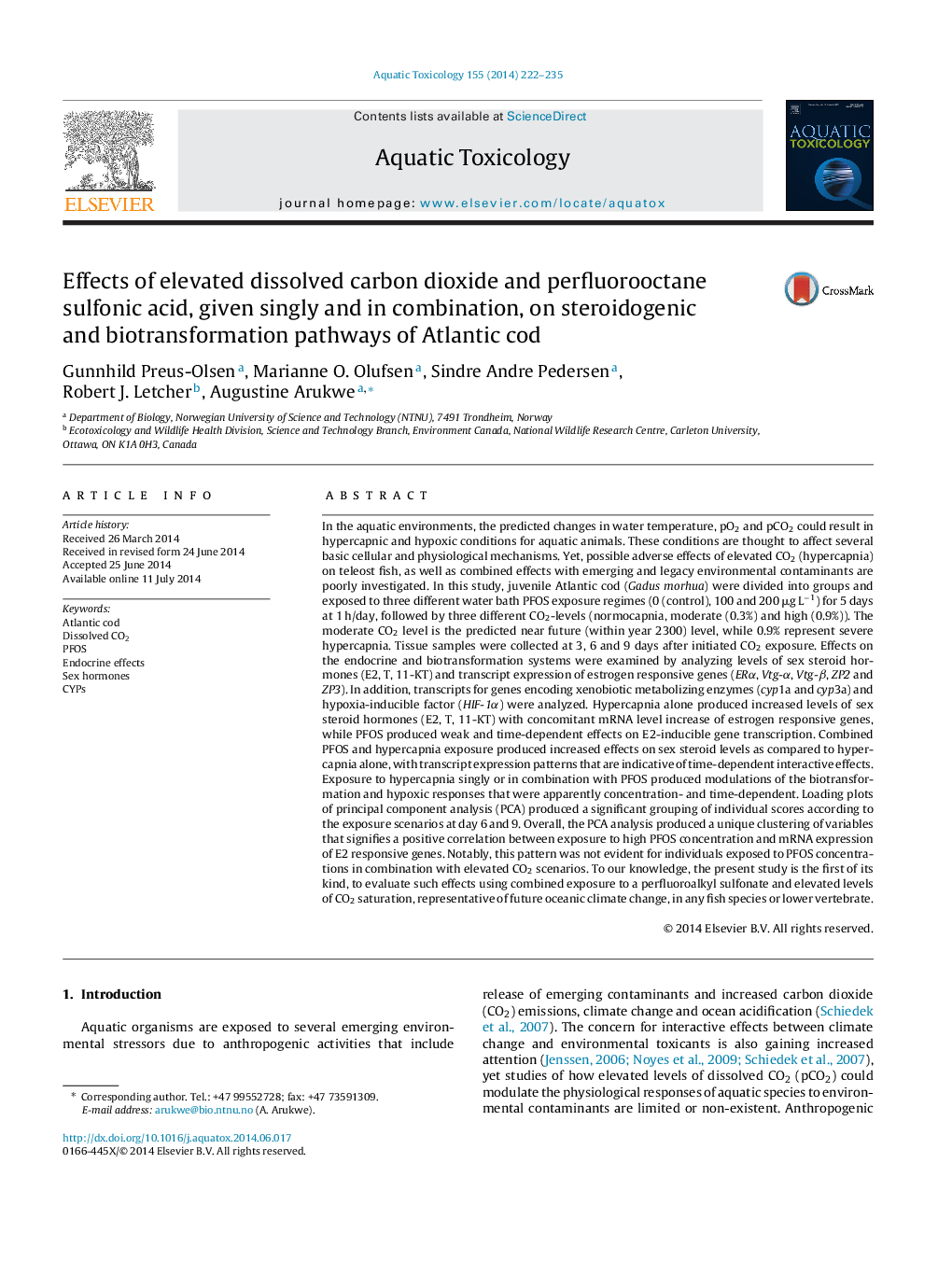| کد مقاله | کد نشریه | سال انتشار | مقاله انگلیسی | نسخه تمام متن |
|---|---|---|---|---|
| 4529176 | 1625950 | 2014 | 14 صفحه PDF | دانلود رایگان |
• Effects of elevated dissolved CO2 and PFOS in Atlantic cod.
• Combined effects of hypercapnia and PFOS on Atlantic cod biotransformation and steroid hormone systems.
• Effects of hypercapnia on Atlantic cod biotransformation and steroid hormone systems.
• Potential consequences of climate change on physiological adaptation.
• Biological interactions of multiple environmental stressors.
In the aquatic environments, the predicted changes in water temperature, pO2 and pCO2 could result in hypercapnic and hypoxic conditions for aquatic animals. These conditions are thought to affect several basic cellular and physiological mechanisms. Yet, possible adverse effects of elevated CO2 (hypercapnia) on teleost fish, as well as combined effects with emerging and legacy environmental contaminants are poorly investigated. In this study, juvenile Atlantic cod (Gadus morhua) were divided into groups and exposed to three different water bath PFOS exposure regimes (0 (control), 100 and 200 μg L−1) for 5 days at 1 h/day, followed by three different CO2-levels (normocapnia, moderate (0.3%) and high (0.9%)). The moderate CO2 level is the predicted near future (within year 2300) level, while 0.9% represent severe hypercapnia. Tissue samples were collected at 3, 6 and 9 days after initiated CO2 exposure. Effects on the endocrine and biotransformation systems were examined by analyzing levels of sex steroid hormones (E2, T, 11-KT) and transcript expression of estrogen responsive genes (ERα, Vtg-α, Vtg-β, ZP2 and ZP3). In addition, transcripts for genes encoding xenobiotic metabolizing enzymes (cyp1a and cyp3a) and hypoxia-inducible factor (HIF-1α) were analyzed. Hypercapnia alone produced increased levels of sex steroid hormones (E2, T, 11-KT) with concomitant mRNA level increase of estrogen responsive genes, while PFOS produced weak and time-dependent effects on E2-inducible gene transcription. Combined PFOS and hypercapnia exposure produced increased effects on sex steroid levels as compared to hypercapnia alone, with transcript expression patterns that are indicative of time-dependent interactive effects. Exposure to hypercapnia singly or in combination with PFOS produced modulations of the biotransformation and hypoxic responses that were apparently concentration- and time-dependent. Loading plots of principal component analysis (PCA) produced a significant grouping of individual scores according to the exposure scenarios at day 6 and 9. Overall, the PCA analysis produced a unique clustering of variables that signifies a positive correlation between exposure to high PFOS concentration and mRNA expression of E2 responsive genes. Notably, this pattern was not evident for individuals exposed to PFOS concentrations in combination with elevated CO2 scenarios. To our knowledge, the present study is the first of its kind, to evaluate such effects using combined exposure to a perfluoroalkyl sulfonate and elevated levels of CO2 saturation, representative of future oceanic climate change, in any fish species or lower vertebrate.
Journal: Aquatic Toxicology - Volume 155, October 2014, Pages 222–235
